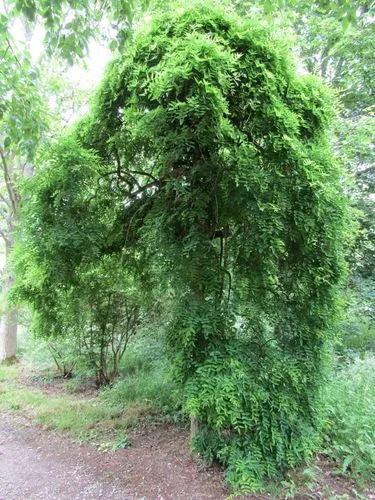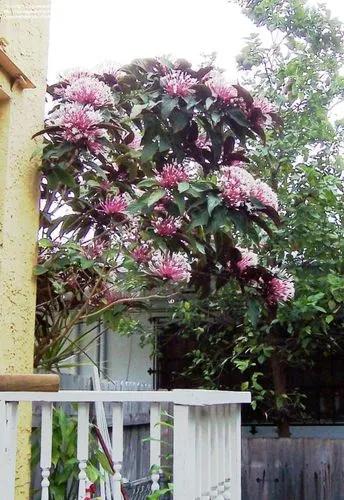Solanum dulcamara or Climbing Nightshade is a perennial climbing vine known for its attractive purple-blue flowers, which bloom from June to September, and its red or purple berries. While the flowers pose no health risks, ingesting the berries is toxic to humans and animals. Still, it is not recommended to consume the flowers since some may have traces of toxic compounds.
Climbing Nightshade Care
Solanum dulcamara



Climbing Nightshade is native to Europe and Asia but has also spread to other regions and is considered a weed in many areas. Climbing Nightshade can reach up to 32 feet (10 m) in length. It has green or purplish stems that are four-angled and slightly hairy. The leaves are alternate, simple, and oval-shaped, and have smooth or somewhat hairy surfaces. The flowers are small, star-shaped, purple-blue to violet in color, and usually found in clusters of 1-3. They bloom from June to September. The berries are small, round, red or purple, and are arranged in clusters. They ripen from August to October. Ingesting berries is poisonous for humans and animals.
How to Care for the Plant

Water

These flowers need about 0.8 cup of water every 9-10 days. Be careful not to waterlog the soil!

Pruning

Does not require heavy pruning. Remove any dead or damaged leaves and flowers to encourage new growth, before the growth season, preferably in late winter or early spring.

Fertilizer

You can add a slow-release fertilizer or a balanced, water-soluble fertilizer to the soil at planting time and then again at regular intervals throughout the growing season (spring to late fall). Make sure the potting mix is rich in nitrogen.

Sunlight

In the wild, Nightshade lives in partial shade, so don't rush to decorate your sun-kissed windowsills with these flowers! There are not many things worse than sunburn for these delicate greenies.

Soil

This plant is versatile in terms of soil types, but it thrives in slightly acidic to neutral soil with a pH between 5.5 and 7.5. While it can tolerate clay and sandy soils, it truly prefers loamy soil. For container gardening, consider enhancing the soil with organic matter like compost or well-rotted manure to boost nutrient levels.

Propagation

Collect the seeds from the ripe berries (just don't eat them!) in late summer or early fall, and sow them in a seed tray filled with seed compost. Cover the tray with a plastic lid, and place it in a propagator, or cover it with a plastic bag and place it in a warm place. The seed should germinate within a few weeks. Keep in mind that climbing nightshade is an invasive species, so it's important to take precautions to prevent it from spreading in the surrounding environment.

Temperature

Nightshade does best at the range of about 68 to 95°F (20 -35°C).

Container

Use a very large container since the plant can reach up to 10 feet (3 m) in length. Although Nightshade is usually not grown as a houseplant, with a hanging or regular pot of the right size, you can probably succeed in housing this stunning greenie!

Fun fact

Nightshade's name evokes a sense of mystery… Did you know this flower was used as a protection amulet in medieval magic?

Popularity

1,798 people already have this plant 414 people have added this plant to their wishlists
Discover more plants with the list below
Popular articles






